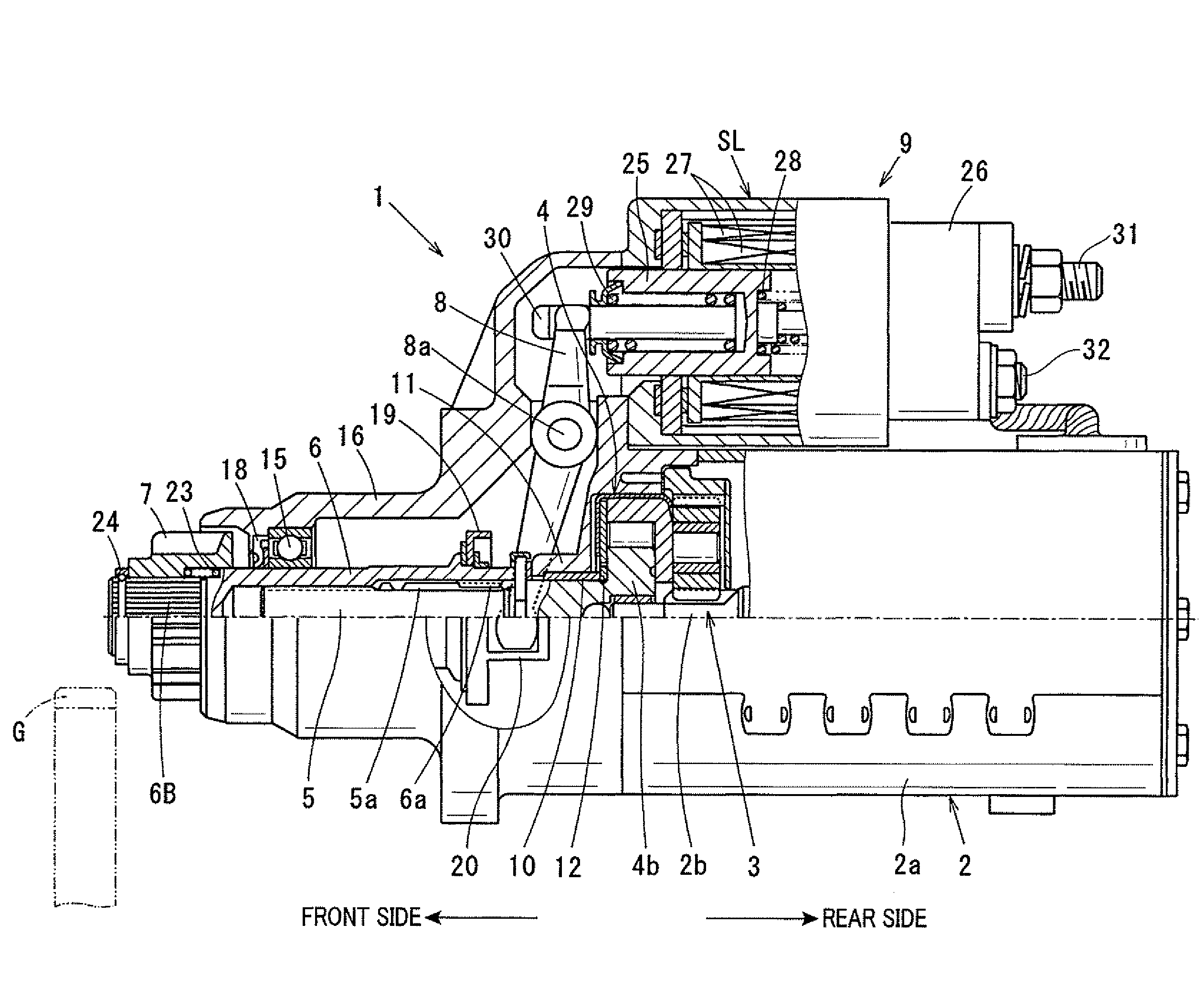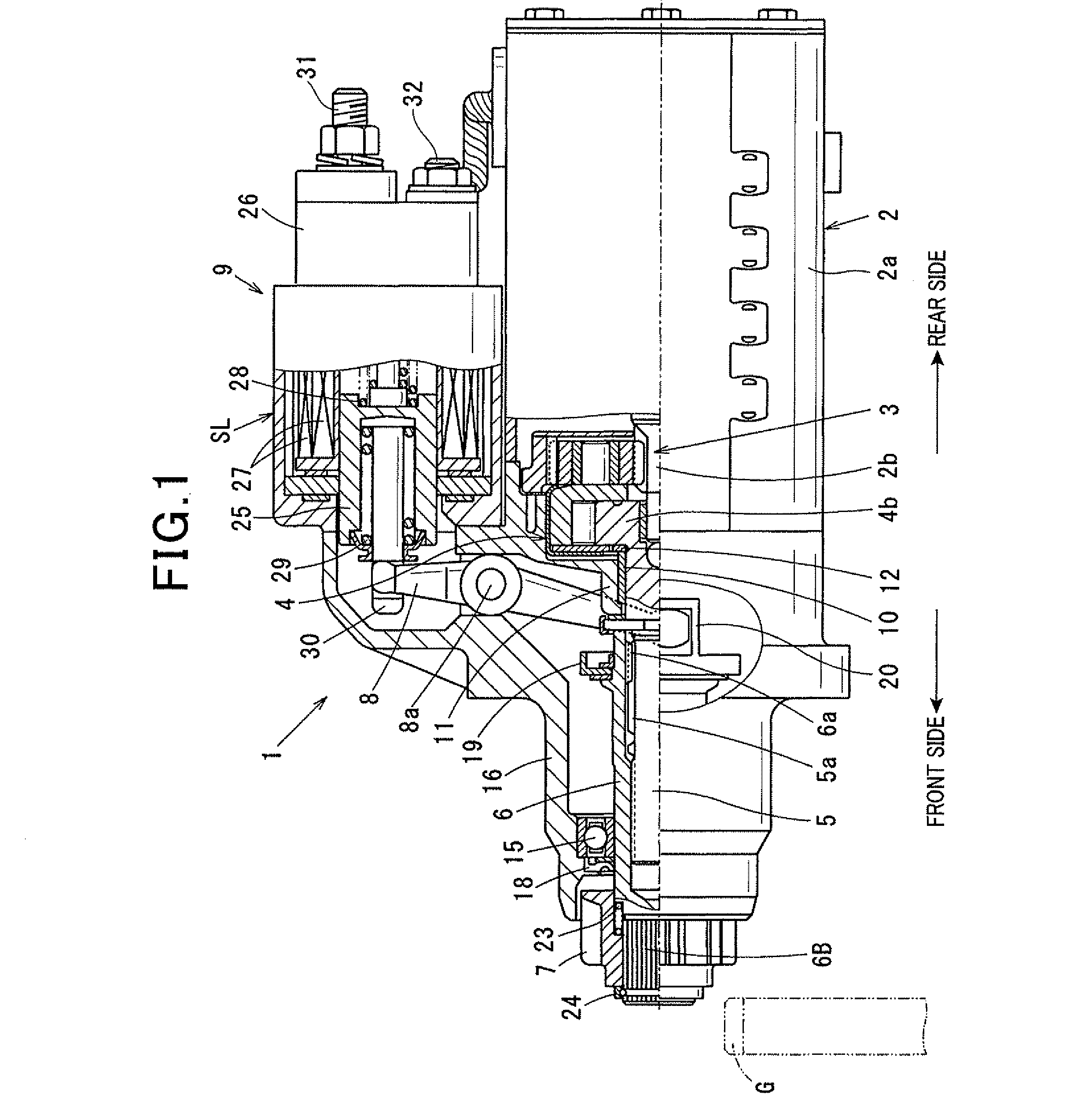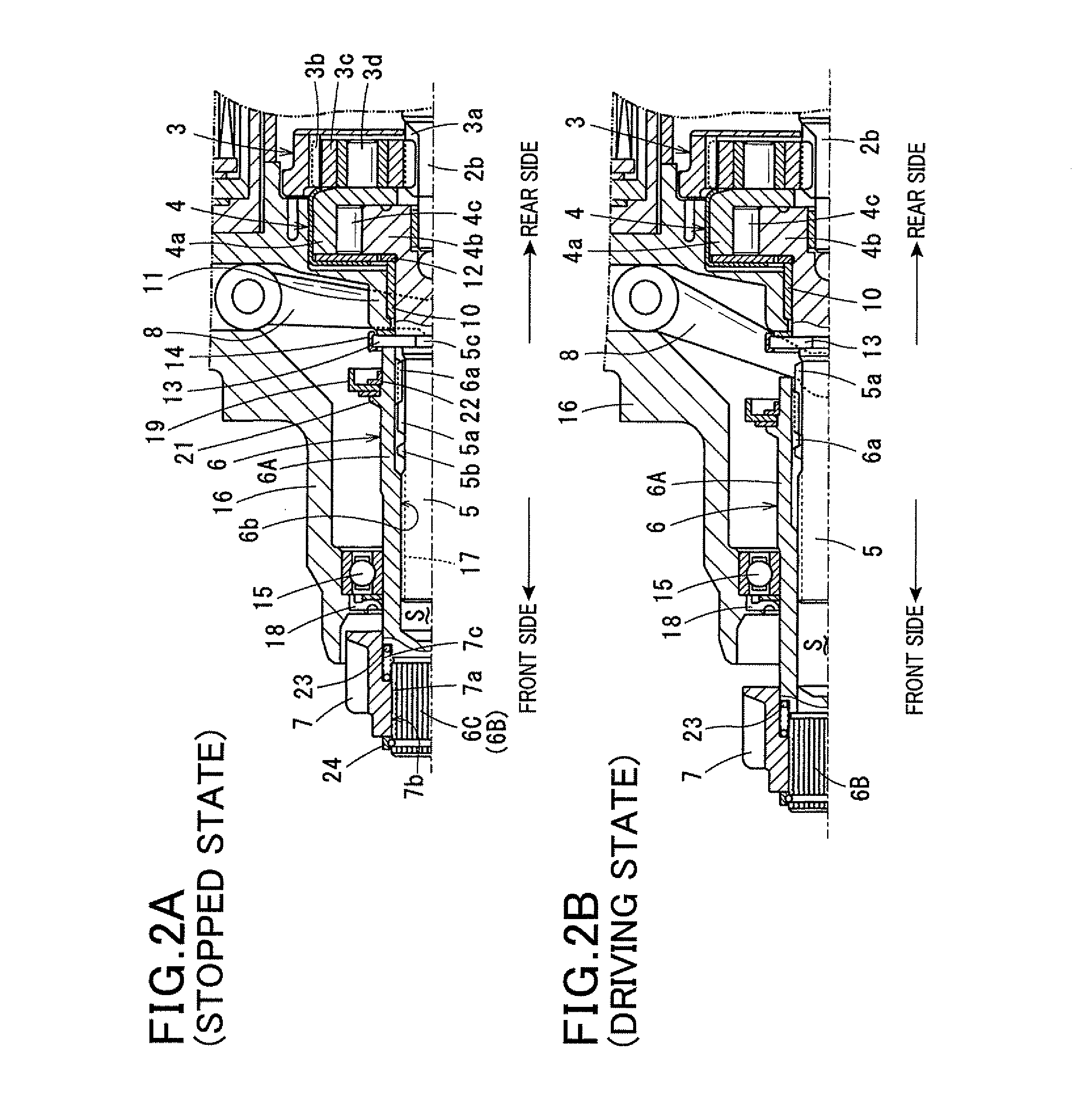starter
a technology of starters and starters, applied in the field of starters, can solve the problems of difficult to secure high durability of starters, relative inclination between male and female splines, adhesion between tooth surfaces, etc., and achieve the effect of suppressing wear of the two surfaces, reducing the number of times the starter starts the engine of the vehicle, and reducing the number of times the starter starts the engin
- Summary
- Abstract
- Description
- Claims
- Application Information
AI Technical Summary
Benefits of technology
Problems solved by technology
Method used
Image
Examples
Embodiment Construction
[0028]FIG. 1 shows the overall structure of a starter 1 according to an exemplary embodiment. The starter 1 is designed to start an internal combustion engine (not shown) of a motor vehicle.
[0029]As shown in FIG. 1, the starter 1 includes: a motor 2 that generates torque; a speed reducer 3 that reduces the rotational speed of the motor 2; a clutch 4; an output shaft 5 that is mechanically connected to the output side of the speed reducer 3 via the clutch 4; a pinion tube 6 that is helical-spline-fitted to the outer periphery of the output shaft 5; a pinion 7 that is fitted on a non-motor-side end portion (i.e., a left end portion in FIG. 1) of the pinion tube 6 so as to rotate with the pinion tube 6; a shift lever 8 that is configured to shift both the pinion tube 6 and the pinion 7 relative to the output shaft 5 in the axial direction away from the motor 2 (i.e., in the leftward direction in FIG. 1) and thereby bring the pinion 7 into mesh with a ring gear G of the engine; and an e...
PUM
 Login to View More
Login to View More Abstract
Description
Claims
Application Information
 Login to View More
Login to View More - R&D
- Intellectual Property
- Life Sciences
- Materials
- Tech Scout
- Unparalleled Data Quality
- Higher Quality Content
- 60% Fewer Hallucinations
Browse by: Latest US Patents, China's latest patents, Technical Efficacy Thesaurus, Application Domain, Technology Topic, Popular Technical Reports.
© 2025 PatSnap. All rights reserved.Legal|Privacy policy|Modern Slavery Act Transparency Statement|Sitemap|About US| Contact US: help@patsnap.com



